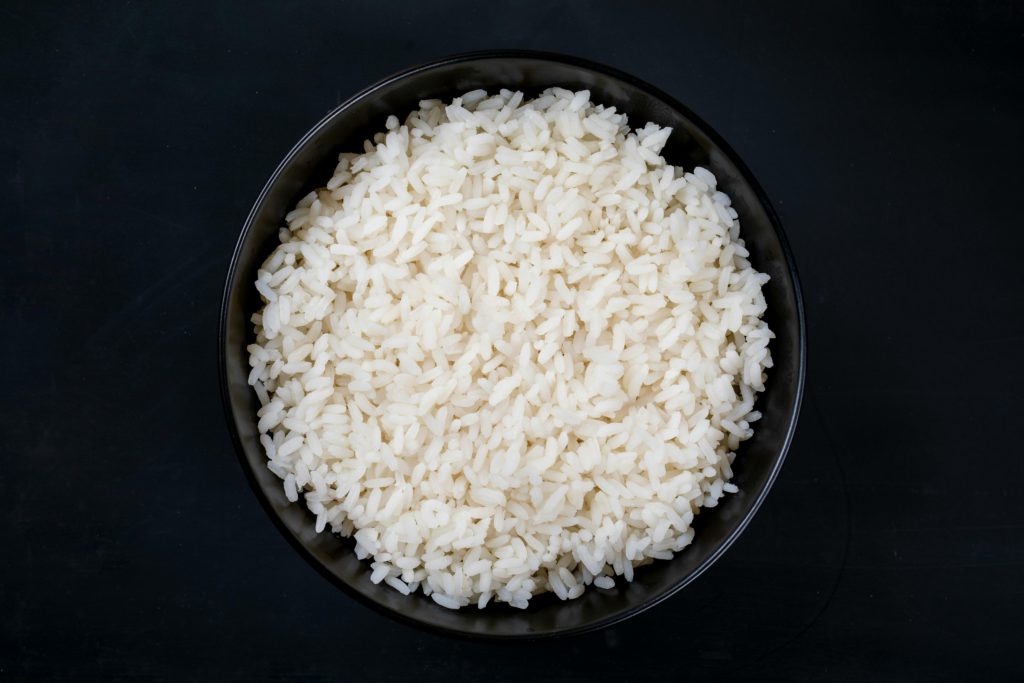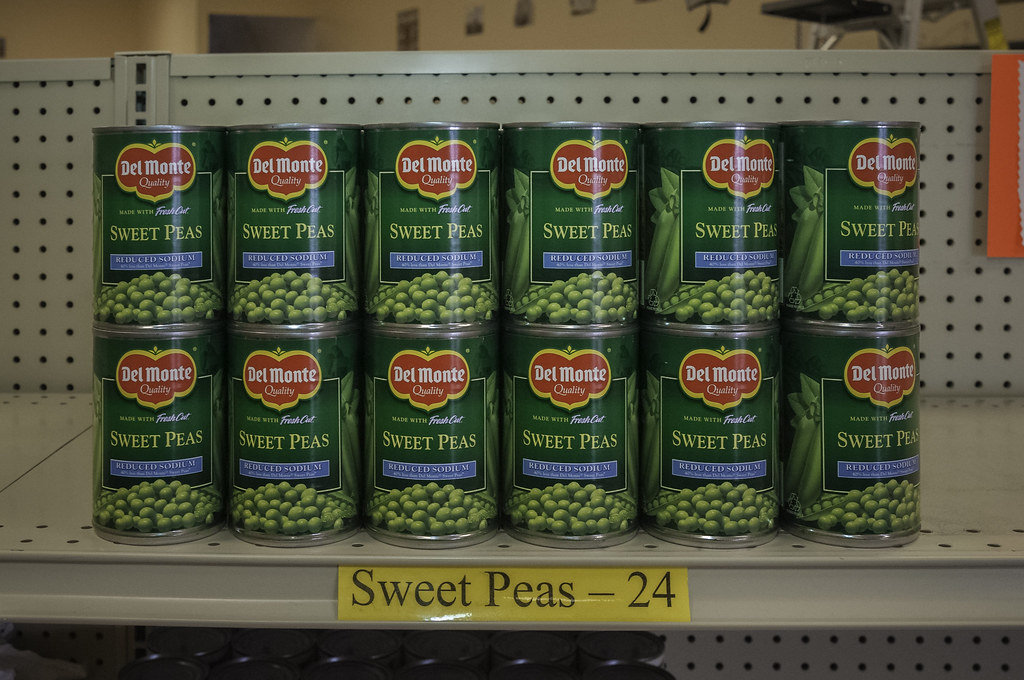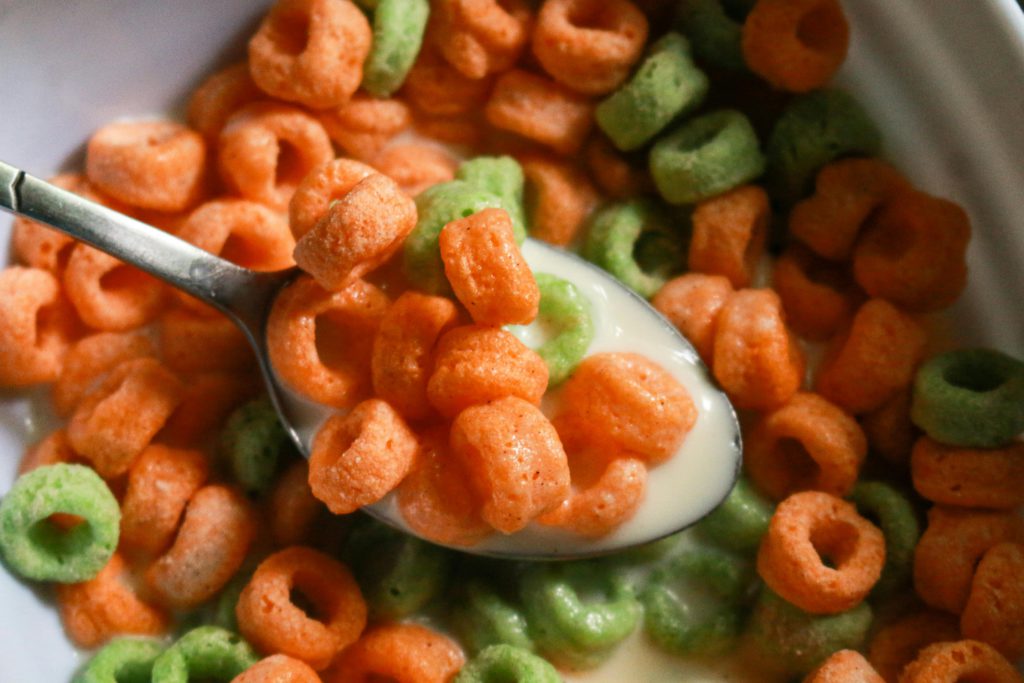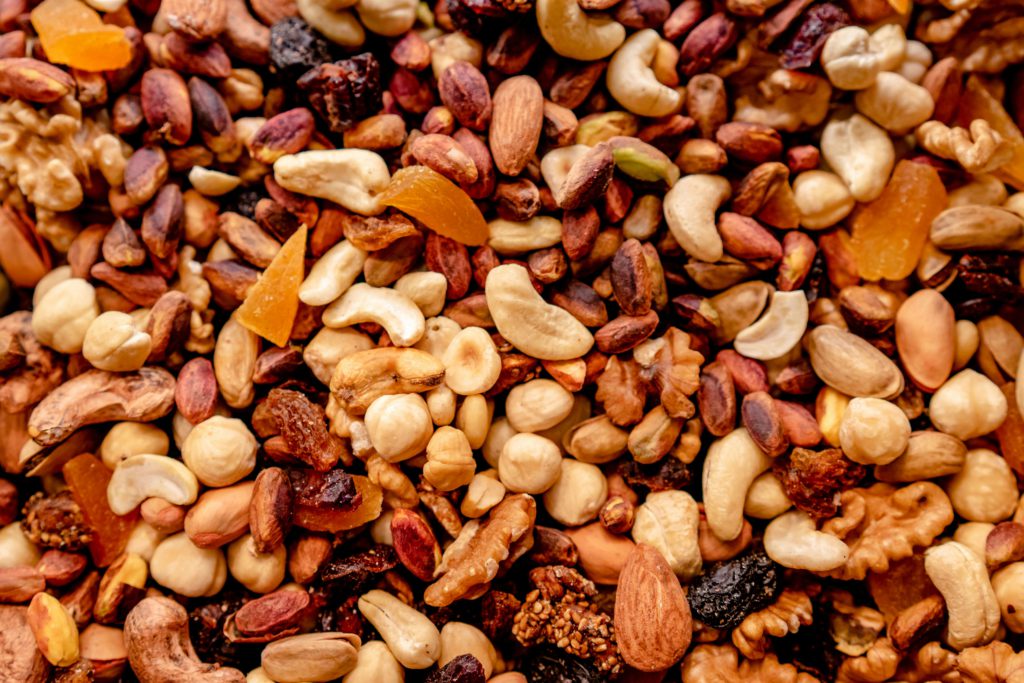Ever watched “The Walking Dead” and wondered how you’d fare if the grocery store shelves suddenly went bare? It happens faster than you’d think. Those well-stocked aisles transform into scenes from a post-apocalyptic movie the moment disaster whispers through town. Panic buyers swarm like locusts, supply chains crack under pressure, and suddenly everyone’s fighting over the last can of beans.
Relief organizations talk about three-day supplies, but that’s rookie numbers. When systems break down, help might take weeks or months to reach you—about as reliable as pizza delivery during a blizzard. This 14-day pantry blueprint puts you ahead of 95% of your neighbors. No zombie-fighting skills required, just smart storage and a bit of planning. Consider it your culinary insurance policy.
22. White Rice: The Apocalypse All-Star

White rice sits on the throne of emergency food planning, the James Bond of shelf-stable carbs—reliable, versatile, and remarkably long-lasting. Unlike its hippie cousin brown rice, white rice won’t go rancid when stored properly. Pack away 5 pounds per person, and you’ve got the foundation for two weeks of meals that’ll be ready to eat long after your Netflix subscription expires.
Store this starchy superhero in airtight containers somewhere cool and dry, and it’ll still be cooking up perfectly 25-30 years later. That’s not a typo. When the power’s out and stress levels soar, these tiny white grains deliver quick energy without complaint. They’re blank canvases waiting for whatever flavor companions you’ve had the foresight to store alongside them. Just make sure you toss in oxygen absorbers and keep them out of direct light.
21. Beans: The Humble Heavyweight

Beans deserve far more respect than they get in everyday cooking—these are the unsung champions of the emergency pantry world. Stock up on 10 – 15 pounds of dried beans for a family of four, or grab a case of canned varieties and you’ve secured yourself a protein powerhouse that pairs with rice like Butch Cassidy and the Sundance Kid—a legendary duo that’s greater than the sum of its parts.
Together, beans and rice create a complete protein with all the essential amino acids your body needs. Dried beans last up to three decades when stored properly, while their canned siblings stay good for 2-5 years. Canned beans require zero cooking—a huge win when power goes down and you’re operating by flashlight. They’re the ready-to-rumble fighters in your nutritional arsenal.
20. Canned Meat: Protein Without The Pampering

In the world of emergency eating, canned meat is that friend who shows up ready to party without needing special treatment. No refrigeration, no cooking, no fuss—just protein waiting patiently on your shelf for up to five years. Stock about 20 cans of tuna, chicken, Spam, or salmon, and you’ve got muscle-maintaining nutrition ready faster than you can say “power outage.”
The variety keeps meals interesting when the days start blurring together. These shelf-stable meat options are packed with amino acids and micronutrients that help keep your body and brain functioning when everything else has gone sideways. They’re the perfect wingman for your grains and beans—less glamorous than fresh steaks but infinitely more reliable when the chips are down.
19. Canned Fruit: Apocalypse Dessert

Canned peaches during a blackout taste better than five-star restaurant desserts. That’s not hyperbole—it’s the strange alchemy of crisis eating. These humble jars and cans deliver vital vitamin C and other nutrients when fresh produce becomes a distant memory, like finding an oasis in a desert of bland emergency rations.
With shelf lives stretching beyond two years, canned fruits bring brightness to dark times. They’re mood boosters disguised as food, the emergency pantry equivalent of watching “The Great British Bake Off” after a terrible day. Their sweet, refreshing flavors remind you that even in emergencies, small pleasures matter. Stock variety to prevent flavor fatigue and keep morale from crashing alongside the power grid.
18. Canned Vegetables: The Nutritional Safety Net

Canned vegetables play the dependable character actor in your emergency food movie—not the flashy lead but absolutely essential to the overall story. Aim for 20 cans of favorites you actually eat regularly. This isn’t the time to convince yourself you’ll suddenly develop a taste for canned Brussels sprouts when the world goes sideways. However, make sure that these canned vegetables don’t become part of the harmful foods that get hidden in your kitchen.
These ready-to-eat nutritional workhorses deliver fiber and vitamins that might otherwise go missing from your crisis cuisine. Their 1-2 year shelf life means they’ll be standing by when needed, requiring zero preparation beyond a can opener. Like the supporting cast in “Ocean’s Eleven,” each brings something special to the ensemble while making the whole operation work better.
17. Canned Soup: Comfort In A Crisis

When disaster strikes, canned soup transforms from lazy bachelor food to gourmet comfort. There’s something almost magical about the psychological lift that comes from familiar, savory flavors when everything else feels uncertain. Stock around 20 assorted cans and you’ve basically got a hug in food form, waiting patiently on your shelf for up to two years.
The beauty of soup lies in its ready-when-you-are nature. Even cold, it delivers a complete meal in one container—protein, vegetables, and soul-soothing broth all in one go. During Hurricane Sandy, survivors talked about canned soup as if it were ambrosia. It fed both bodies and spirits when people needed it most, making it worth its weight in space on the shelf.
16. Powdered Milk: The Dairy Transformer

Powdered milk suffers from a serious PR problem. People think of it as sad milk, the understudy nobody wants to see perform. But in emergency situations, this unassuming powder becomes a kitchen MVP with multiple culinary talents—like Meryl Streep seamlessly sliding between roles, it transforms into whatever dairy application you need.
With a shelf life stretching from 2-10 years, depending on fat content and storage conditions, powdered milk brings crucial calcium and vitamins A, D, and B12 to your emergency menu. Mix it into oatmeal, add it to coffee, use it for baking, or reconstitute it for cereal. For children especially, maintaining this familiar nutrient source during disruptions helps keep both bodies and routines intact.
15. Cereal: The Breakfast Hero

Cereal might seem frivolous compared to rice and beans, but maintaining breakfast normalcy during emergencies pays psychological dividends worth every inch of storage space. Nothing tells your brain “we’ve got this” quite like a familiar morning ritual when the world outside has gone haywire. The crunch of cereal can sound suspiciously similar to the sound of sanity being preserved.
Most dry cereals maintain quality for 6-12 months when properly sealed, creating a quick-energy breakfast option requiring zero cooking. They work with powdered milk or can be eaten dry as a snack when water conservation matters. For families with children, this familiar food provides comfort similar to a favorite stuffed animal—sometimes the most practical survival tools aren’t listed in prepper manuals.
14. Oatmeal: The Chameleon Carb

Oatmeal deserves Hall of Fame status in the emergency food hall for its incredible adaptability. Five pounds provides enough breakfast foundation for two weeks, transforming each morning into a different experience despite using the same base ingredient. It’s the breakfast equivalent of those modular furniture systems that seem to solve every storage problem with just a few pieces.
Stored properly, rolled oats maintain quality for 1-2 years, while bulk oats can last decades. Beyond its impressive shelf life, oatmeal pairs well with a variety of sweet or savory additions you’ve stored—honey, dried fruit, nuts, or even canned meat for a savory twist. It cooks with minimal water, stays with you for hours, and doesn’t complain if your only cooking method is adding room temperature water and waiting.
13. Peanut Butter: Concentrated Survival Fuel

Peanut butter packs more survival punch per spoonful than almost anything else in your pantry. Those jars contain concentrated energy that keeps blood sugar steady and hunger at bay between meals. It’s basically survival rations that happen to taste like childhood comfort—the nutritional equivalent of having Batman waiting in your pantry for 6 months to 2 years.
The versatility of peanut butter makes it invaluable during extended emergencies. Spread it on anything, mix it into oatmeal, or eat it straight from the jar—no judgment during disasters. Its protein-fat combination provides lasting energy when you might be more physically active than usual (hauling water or manually washing clothes burns serious calories). Just check for allergens if you’re stocking for a group.
12. Pancake Mix: Morning Morale in a Box

Pancake mix might seem like a weekend luxury rather than a survival necessity, but don’t underestimate the psychological impact of producing a hot, familiar breakfast during a crisis. There’s something almost defiant about flipping pancakes when the world’s gone sideways. It tells your brain: we still have enough control to make something special, like Andy Dufresne cooking up hope in “The Shawshank Redemption.”
Store about 10 pounds of mix for a two-week supply that keeps for 6-12 months in proper storage. With just water and minimal cooking, you create a filling meal that brings normalcy to abnormal situations. Add honey or jam for a motivational boost that punches well above its caloric weight. Sometimes survival is as much about feeding resolve as feeding bodies.
11. Honey, Jam, and Syrup: Sweet Survival Strategy

The ancient Egyptians packed honey in tombs because it never spoils—talk about extreme long-term storage planning. Unlike most foods, properly stored honey remains viable literally forever, making it the Keith Richards of sweeteners. Ten pounds of honey, plus some jam and syrup, transforms emergency eating from mere survival to something approaching enjoyment.
Beyond flavor enhancement, these sweet additions provide fast-acting energy when needed. They boost morale and encourage eating when appetite falters under stress. Honey even pulls double duty with antimicrobial properties useful for wound care. In disasters, having multiple-use items that serve both practical and psychological needs makes them worth their weight in shelf space.
10. Pasta: The Crowd-Pleasing Carb

Pasta has fueled humans through countless hardships across centuries—from Italian peasants to college students to emergency preppers. There’s good reason for its staying power. Storing 10-20 pounds provides a foundational carbohydrate that cooks quickly, satisfies deeply, and lasts for years. It’s culinary comfort that performs as reliably as Tom Hanks in any role.
Dried pasta maintains quality for 2-3 years when properly stored, making it ideal for rotation through your emergency pantry. The leftover cooking water contains valuable starch for thickening other dishes, stretching your resources further. Few emergency foods offer pasta’s combination of familiarity, versatility, and storage efficiency—it’s the sensible sedan of your food storage garage: dependable, practical, and always ready to go.
9. Spaghetti Sauce: Flavor Savior

Even the most dedicated prepper admits that emergency food can become mind-numbingly bland. That’s where spaghetti sauce earns its place in your survival strategy. Ten jars of sauce transform basic pasta into meals people actually want to eat. They’re like the director who turns a decent script into an Oscar contender, elevating everything they touch.
With shelf lives of 1-2 years unopened, these flavor bombs also deliver vitamin C, lycopene, and additional nutrients beyond their taste-enhancing properties. The variety of flavors available helps prevent the meal fatigue that can lead to undereating during extended emergencies. Never underestimate how flavor impacts consumption—when stress suppresses appetite, enjoyable food becomes medically important.
8. Salt: The Mineral Magician

Salt might be the most underrated item in emergency planning. This humble mineral not only makes everything taste better—it’s physiologically essential. Your body literally cannot function without proper sodium levels. Marathon runners who drink only water sometimes collapse from hyponatremia (low sodium), while those who supplement with salt keep going. Your emergency stockpile needs this same endurance strategy.
With an indefinite shelf life if kept dry, salt never expires or loses potency. It preserves other foods, enhances flavors, and maintains your body’s critical electrolyte balance. During prolonged emergencies where you might be more physically active or sweating more than usual, proper sodium intake becomes non-negotiable. Consider stocking sea salt for additional trace minerals that become harder to source when produce is unavailable.
7. Oil: The Calorie Concentrator

Cooking oil performs kitchen alchemy, transforming dry ingredients into satisfying meals while delivering concentrated calories and essential fatty acids. Three tablespoons contain about 360 calories—that’s serious energy density when resources are limited. It’s the quiet efficiency expert of your emergency pantry, making everything work better while multiplying your cooking options.
With a shelf life of 1-2 years unopened and 6 months after opening, oils need more rotation than some emergency supplies but earn their keep through versatility. They help absorb fat-soluble vitamins A, D, E, and K from your other foods, making those nutrients bioavailable. The satiety factor of fats also helps meals feel complete and satisfying even when portions might be more modest than usual.
6. Coffee and Tea: Liquid Sanity

In disaster zones around the world, one of the first community activities to emerge is sharing hot drinks. This isn’t frivolous—it’s deeply psychological. Coffee and tea represent normalcy and provide gentle stimulation when fatigue sets in. They’re like the montage sequence in survival movies where characters find their rhythm and adapt to new challenges.
These comfort beverages last impressively long—up to two years for coffee and even longer for properly sealed tea. Beyond caffeine benefits, they create ritual and routine when everything else feels chaotic. The simple act of boiling water and preparing a familiar drink becomes an anchor point in disrupted days. Even FEMA responders recognize hot beverages as morale necessities rather than luxuries during extended emergencies.
5. Spices and Condiments: Flavor Lifeline

Emergency food planning has evolved beyond mere calorie counting to recognize that monotony leads to underconsumption. Spices and condiments are the antidote to food fatigue—they’re the plot twists that keep your taste buds turning pages. Items like hot sauce, oregano, cinnamon, and curry powder transform repetitive ingredients into distinct meals, the culinary equivalent of character actors who completely change a scene.
Dried spices typically last 1-3 years while bottled sauces remain good for 1-2 years unopened. Their flavor-to-space ratio makes them storage superstars. Beyond variety, many spices offer antimicrobial properties and additional nutrients. When you’re eating from the same limited pantry for weeks, these flavor enhancers become psychologically crucial—they’re not luxuries but necessities for sustained adequate nutrition.
4. Nuts: Compact Nutrition

Nuts deliver survival nutrition in nature’s perfect portable packaging. These unassuming nutritional powerhouses pack protein, healthy fats, and satisfying crunch into shelf-stable form. They’re the emergency pantry’s version of those expandable camping tools—small in storage but big in function when deployed.
With shelf lives ranging from 6 months to over a year when unopened, various nuts provide concentrated calories and prolonged energy. The healthy fats and protein help maintain muscle mass and satiety between meals. When cooking becomes difficult or time-consuming, having ready-to-eat, nutrient-dense options makes daily life more manageable. Just a handful can bridge hunger gaps or supplement simpler meals—like nutritional insurance in snack form.
3. Packaged Meals: The Convenience Contingency

Some emergency situations leave you with neither time nor energy for food preparation. That’s when packaged meals like boxed mac and cheese or instant rice dishes earn their place in your stockpile. They’re the emergency food equivalent of having stunt doubles—stepping in to handle the tough scenes when the star (you) needs a break from performing.
Standard packaged meals last 1-2 years, while premium freeze-dried options extend to 25 years in proper storage. The minimal preparation requirements—typically just adding water and heat—make them invaluable during high-stress periods or when resources are limited. Rather than viewing them as everyday options, consider these your relief pitchers—ready to step in when cooking from scratch becomes impractical or impossible.
2. Flour: The Building Block

Few ingredients unlock as many culinary possibilities as flour. This pantry fundamental transforms from bread to pancakes to gravy thickener with just a few additional ingredients. It’s like having a LEGO set in food form—the same basic blocks can build countless different structures depending on what you combine them with.
White flour maintains quality for 6-12 months (longer if vacuum sealed or frozen), providing the foundation for comfort foods that boost morale during extended emergencies. Store 5-10 pounds per person in airtight containers to prevent pest infestation. The ability to produce fresh-baked bread during a crisis delivers psychological benefits that nutritionists now recognize as essential to overall wellness. The smell of bread baking has calmed anxious humans for millennia.
1. Can Opener: The Gatekeeper

The humble can opener stands as the unsung hero of emergency preparedness, the key that unlocks your food kingdom. Without this simple tool, your carefully curated canned goods transform into tantalizingly inaccessible metal puzzles. It’s the emergency equivalent of forgetting the combination to your safe—all that value, completely unreachable.
Include multiple manual openers in different locations, recognizing them as potential single points of failure. Quality matters here—this isn’t where to pinch pennies. A reliable opener will work without electricity and, if well-maintained, can last decades. Consider it the bouncer controlling access to your survival club—no entry without its cooperation. Now that you know what to stock up on, here are a few kitchen gadgets that could help you cook a lot of these meals faster.





























